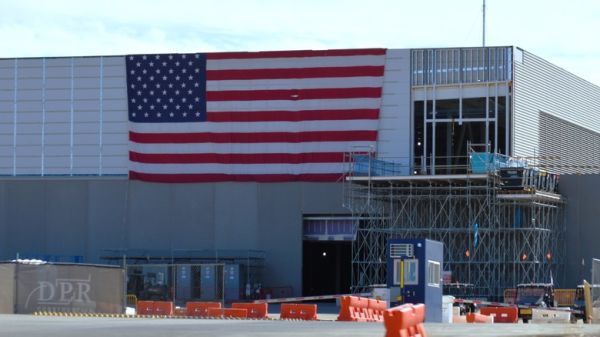Across the U.S., vast, windowless buildings are rising in fields and deserts, powering the artificial intelligence boom one megawatt at a time. These enormous data centers, warehouses crammed with servers that tick along day and night, are the foundation of the large language models we know and use so regularly. The massive surge in AI use has resulted in an AI arms race of sorts, with the big players like Meta, Microsoft, and Amazon all vying for land, cheap power, and access to water.
Meta has recently committed to investing $65 billion to expand its global network of AI data centers. Each facility can cover hundreds of thousands of square feet, drawing enormous amounts of electricity and, critically, water to cool everything. While companies like Amazon use reclaimed water to cool their data centers, the issue requires far greater intervention. What was once a niche industry for cloud computing has now become a major consumer of land and resources.
As these data centers continue to multiply, consuming almost everything in their way, they’re creating a new set of concerns and issues for local communities. Due to the extremely high water consumption, water tables are dropping, and people have reported losing water to their homes entirely. Given the expansion is not planning on slowing down anytime soon, who knows what potential consequences are to come if changes aren’t implemented?
Big data with a big cost
Meta’s data center expansion is redefining what “hyperscale” means. The company’s new facilities span from the U.S. to Spain, all the way to Finland. These facilities are built for AI’s next generation of chips, like Nvidia’s Blackwell, which use far more electricity and water as they need aggressive cooling. To power this shift, Meta is partnering with utilities like Salt River Project in Arizona and Denmark’s Ørsted, developing a 300-megawatt solar field and battery array near its Mesa data center.
While it may seem like a step in the right direction to be partnering with renewable energy firms, this push comes with steep environmental and infrastructural costs. Across the West, data centers are consuming an ever-larger share of states’ electricity — up to 11.4% in Oregon and 7.4% in Arizona, according to And the West. Power is not even the main concern, with the data centers utilizing evaporative cooling systems that gulp up hundreds of thousands, even millions, of gallons daily. As reported by the Environmental Energy and Study Institutea large data center can drink up to 5 million gallons of water a day.
Meta argues its facilities are part of the solution. The company has pledged to be “water positive” by 2030, with the aim of restoring more water to ecosystems than it consumes. It’s also investing in tech to solve AI’s planet-polluting problem, like reclaimed wastewater systems and upgraded cooling technology. But critics point out that these commitments don’t fix the immediate issue that is already taking its toll on many communities.
When the wells go dry
In places like Newton County, Georgia, where Meta began working on a $750 million data center in 2018, the effects of the unchecked growth are being felt. The New York Times reported on an elderly couple who live about 1,000 feet from the site and started to lose water pressure within a few months after its construction. Their dishwasher, washing machine, and toilets all broke down, while sediment built up in the taps and their pool. Yet after years of costly repairs, their well still runs dry, and their story has become an example of how quickly infrastructure strain can take its toll on a community.
Newton County’s water authority reports that Meta’s campus now uses roughly 10% of the county’s daily water supply, and with more companies lining up to build, the area could face a water deficit by 2030. Officials say some applicants have requested as much as six million gallons a day — that’s more than the entire county uses. Residents have seen their water rates rise by more than 30% in just two years, while neighboring wells clog with sediment or simply stop flowing altogether.
The human cost of AI’s physical footprint is hard to ignore. Some towns welcome the tax revenue, while others suffer the consequences of a slow drain to their most vital human resource. In a world that is already facing mounting water scarcity issues due to a warming climate, Meta and the industry at large need to move away from tech greenwashing and prioritize finding ways to build these centers without drying out the communities that host them.










